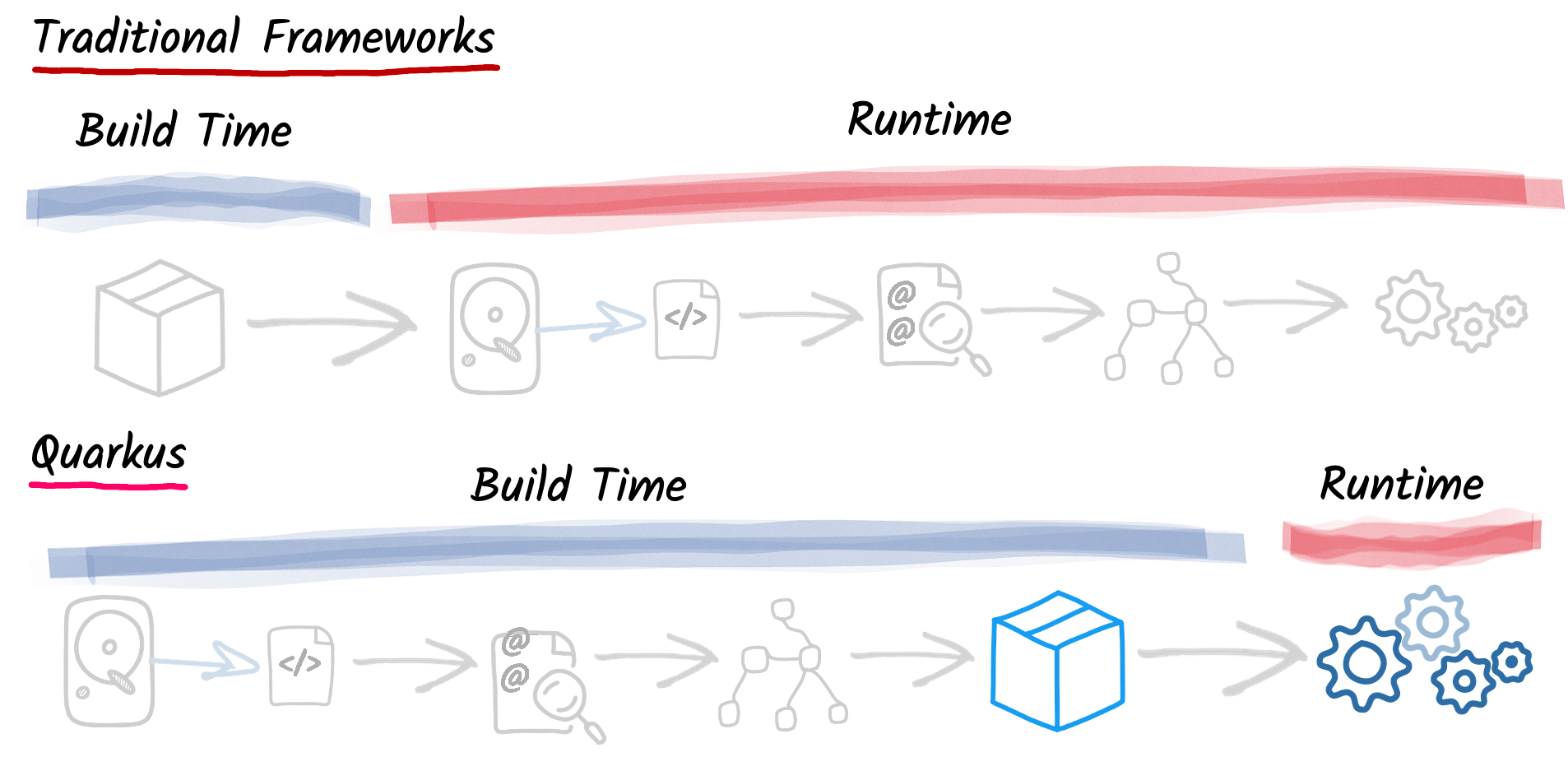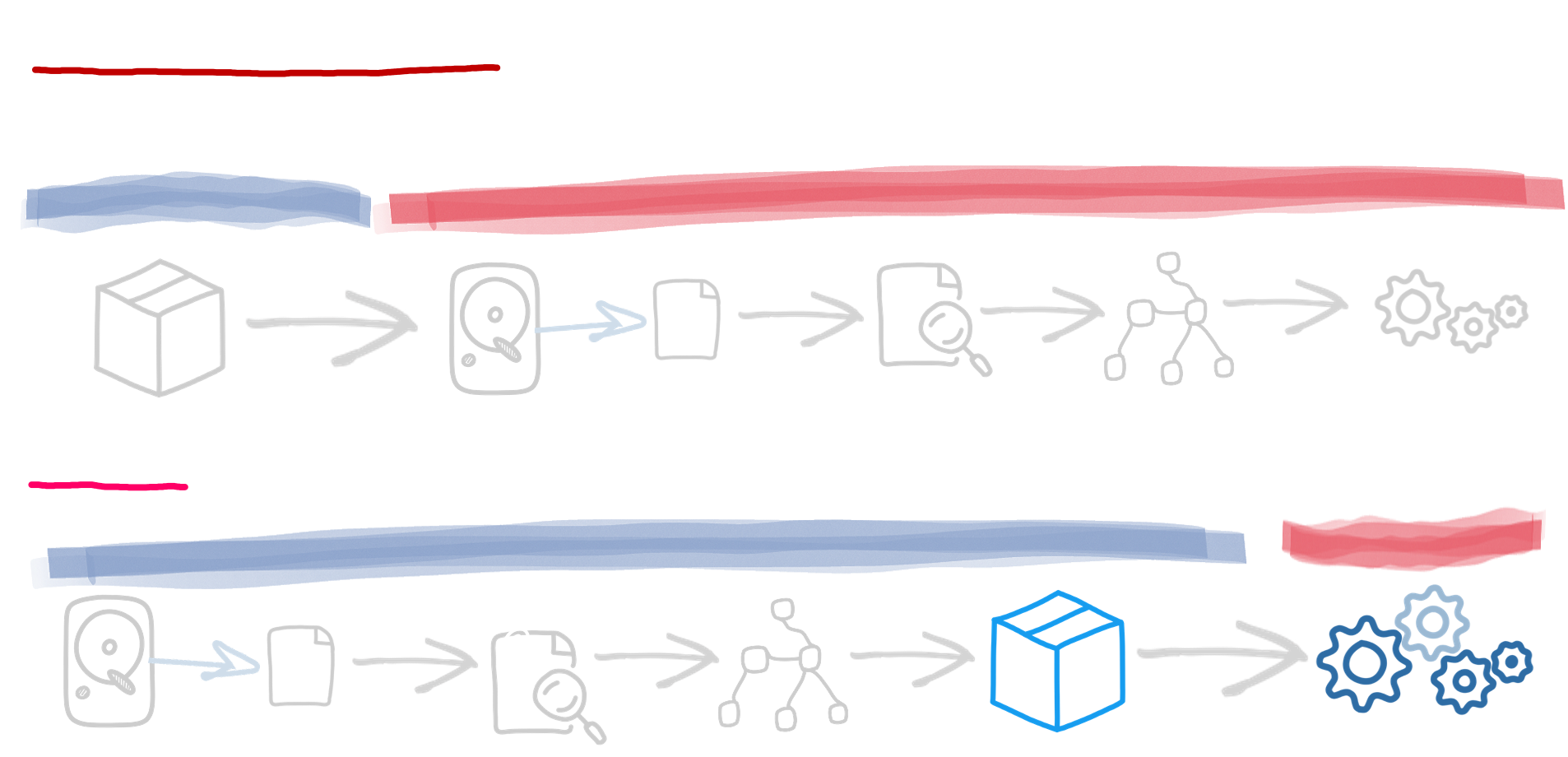Quarkus Performance
Designed for Fast Startup, High Throughput, and Low Resource Consumption
Quarkus is engineered to be efficient by using build-time optimizations and a reactive core to achieve fast startup times, high throughput, low response latency, reduced memory footprint, and minimal resource consumption. As a result, Quarkus is fast... real fast.
Starting fast by doing less: the build-time principle
Quarkus redefines how Java applications are built and executed by shifting much of the work to the build phase ensuring that the costly work happens only once — during the build process — not at every startup. It results in faster, smaller, and more resource-efficient Java applications on both GraalVM native images and traditional JVM deployments.
For example, at build time, Quarkus reads part of the application configuration, scans the classpath for annotated classes, and constructs a model of the application. By doing this early, Quarkus has enough information to eliminate unnecessary components and compute the exact startup instructions required.


This build-time optimization offers several key benefits:
- Reduced startup time: Quarkus performs most of the heavy work at build-time, significantly cutting startup time and allowing the app to reach peak performance faster.
- Lower memory consumption: By minimizing allocations and class loading, Quarkus reduces memory usage. Replacing reflection with build-time bytecode generation further lowers the JVM's runtime workload.
- Better latency and improved throughput: Quarkus generates highly optimized code at build time and prunes unnecessary classes and methods. For instance, it weaves layers of indirection together, enabling better JIT optimizations. These improvements result in faster code and better latency.
High concurrency without the headaches: the reactive core
Quarkus is built on reactive principles, using an efficient asynchronous, non-blocking engine based on Netty and Eclipse Vert.x. It employs a few event loops instead of a large thread pool, reducing resource usage and improving response times by optimizing for hardware behavior.
Reactive underneath does not mean you must write reactive code. Quarkus offers three development models:
- Imperative model: A traditional synchronous approach with faster execution due to an optimized I/O layer, ideal for lower concurrency. High concurrency increases memory use.
- Reactive model: Enables high concurrency with minimal resources using asynchronous, non-blocking code, but is more complex to implement and debug.
- Virtual threads (JDK 21+): Combines the benefits of imperative and reactive models, allowing imperative code to run on lightweight virtual threads for high concurrency with low memory overhead, though some limitations remain.
Continuously Measuring, Continuously Improving
Quarkus is dedicated to continuously improving performance, especially for code running on the critical execution (hot) path. Through ongoing optimizations, Quarkus ensures that every instruction and allocated byte matters, making it one of the most efficient frameworks available for developing high-performance, cloud-ready applications.
